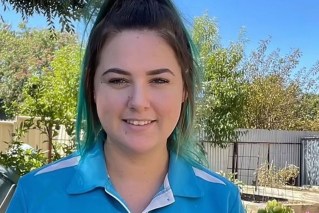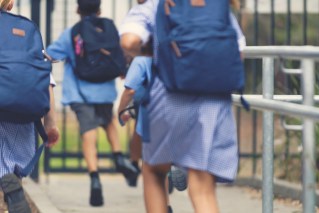Study shows infants are ingesting up to three million microplastics a day


Baby feeding bottles are exposing infants to millions of microplastics every day. Photo: Getty
Australian babies are swallowing up to 585 million tiny pieces of plastic before their first birthday – and the bottles they’re feeding from are to blame.
The container you use to feed milk or formula to your baby is most likely made from a microplastic called polypropylene, which new research says is exposing infants to as many as three million microplastics a day.
In a scientific report released on Tuesday, researchers led by Jing Jing Wang explain how they meticulously sterilised 10 baby feeding bottles that are frequently bought online by parents around the world.
Even after they followed steps from the World Health Organisation on how best to sterilise before feeding a baby, the scientists still found the bottles were releasing anywhere between 1.3 and 16.2 million microplastic particles into an infant’s body after they drank just one litre of formula.
The study found that higher the heat used to sterilise the bottles, the more particles would enter into the milk or formula.
Globally, babies who are fed using polypropylene-based bottles are ingesting on average 1.58 million particles every day of their first 12 months.
That’s more than 2600 times greater than the amount of microplastics adults are estimated to ingest daily, which is up to 600 particles.
Researchers say polypropylene is the most widely used plastic in food preparation. It is predicted that babies in Oceania, North America and Europe are likely to be exposed to the greatest number of microplastics.

Researchers don’t yet know if microplastics are dangerous to infant health. Photo: Getty
Meanwhile, infants in Africa and Asia are estimated to be ingesting the least amount of microplastics.
The study has prompted immediate calls to investigate the effects of microplastic ingestion on babies, as it’s not yet known whether it is dangerous.
“This is shocking new research that further adds to our growing understanding of the prevalence of microplastics in our world,” said Dr Paul Harvey from Environmental Science Solutions.
Generally speaking, infants are most susceptible to the effects of being exposed to chemicals and contaminants, Dr Harvey said.
“The small body size of an infant means that they can receive a proportionately larger dose of plastic-derived chemicals as these microplastics break-down in the digestive tract,” he said.
But Royal Melbourne Institute of Technology Professor of Analytical Chemistry Oliver Jones stressed that it was important to remember that the effects of microplastics on the body are not yet known.
“The findings of this paper may sound quite scary, at first, but we should keep in mind the research only looks at potential microplastic exposure, it does not look at potential effects of such exposure,” Professor Jones said.
“Indeed, we really know very little about the effects of microplastics on children – or adults for that matter.”
He said the study also assumed every bottle prepared by parents would shed particles the same way as in the lab tests, which may not be true.
“This means the numbers listed in the paper should be treated as indications, not absolutes,” Dr Jones said.
“We certainly should not be making parents feel bad for using plastic bottles.
“The above non-withstanding, this study is another piece of the puzzle that illustrates that microplastics problem is likely much bigger than we think. This issue is something we need to start really getting to grips with sooner rather than later.”








